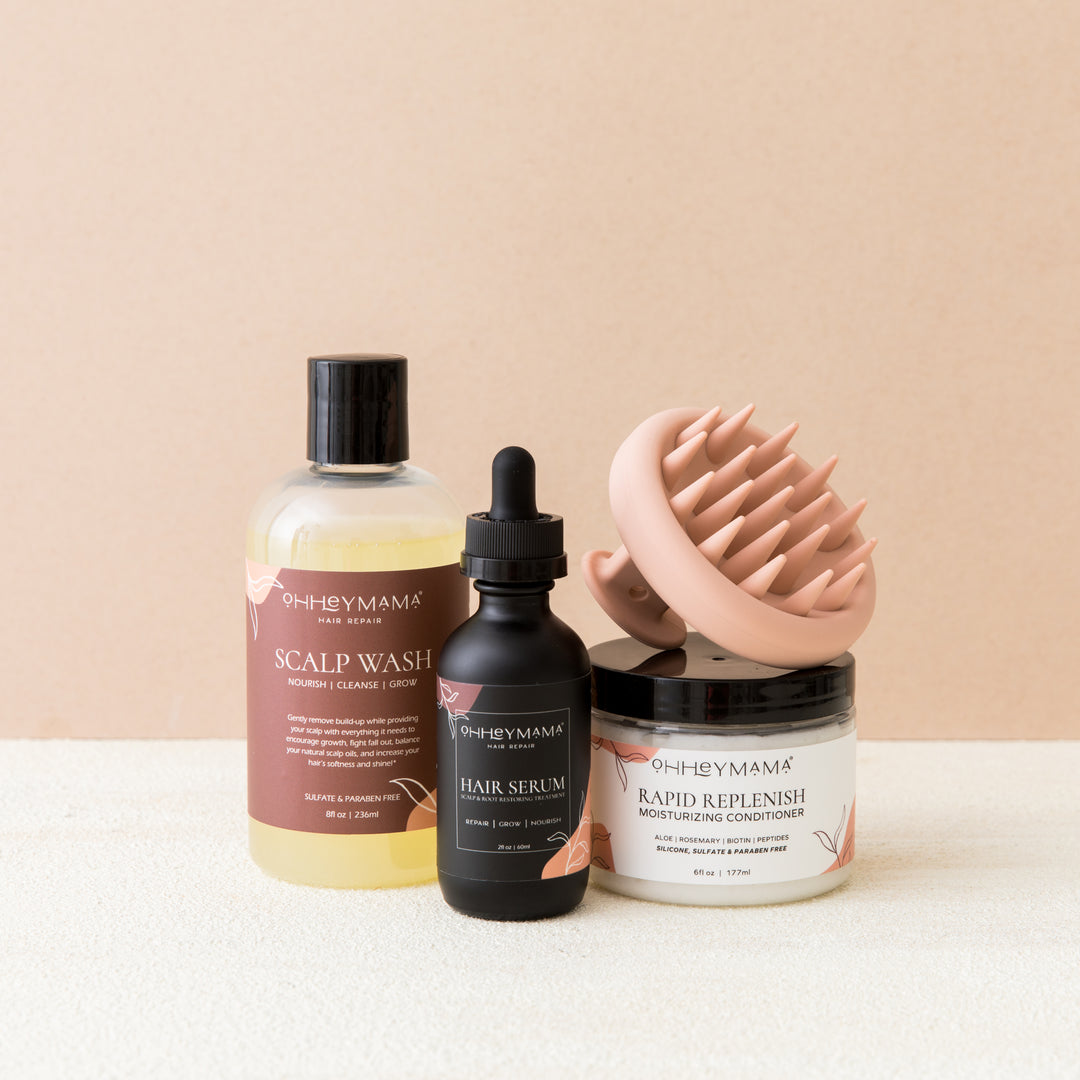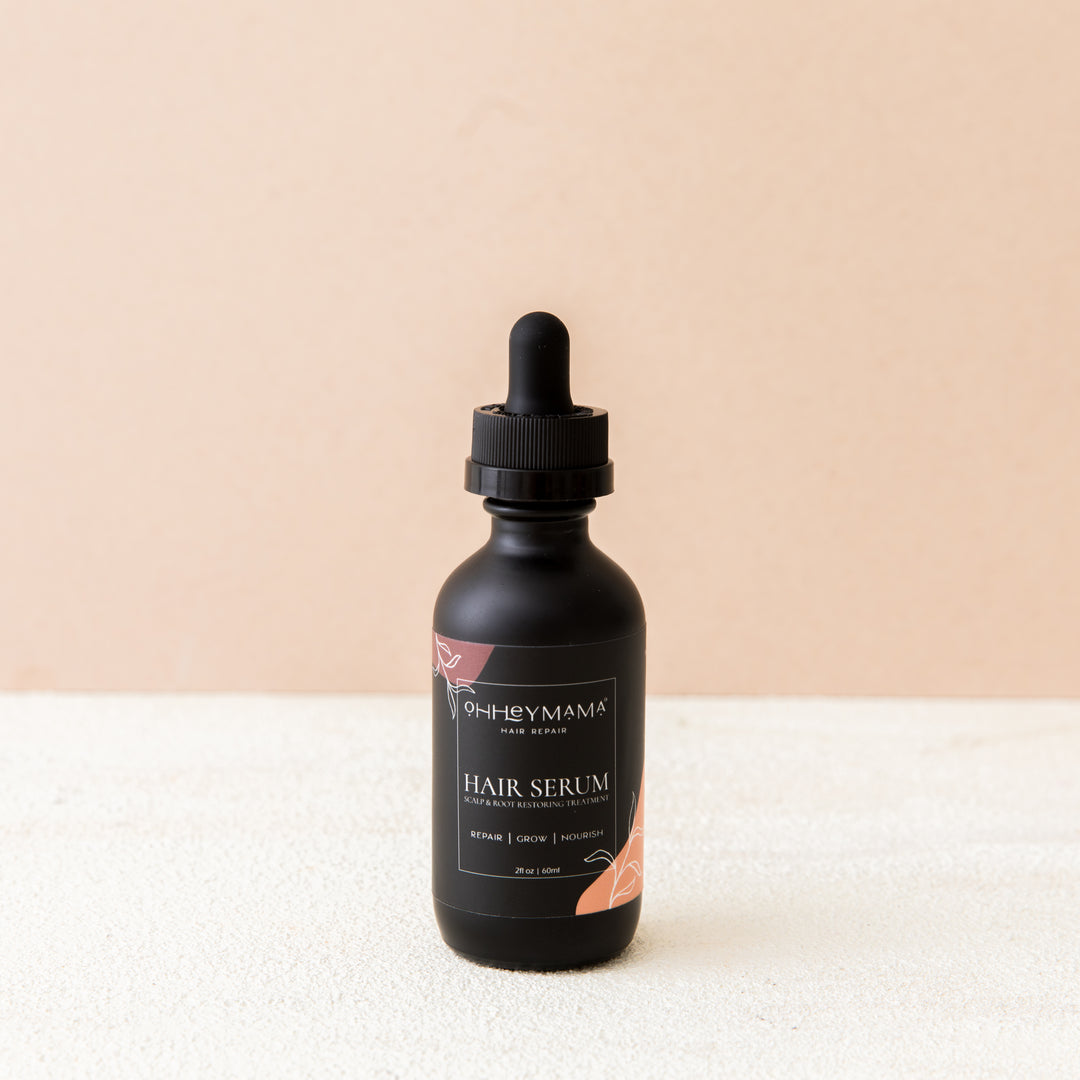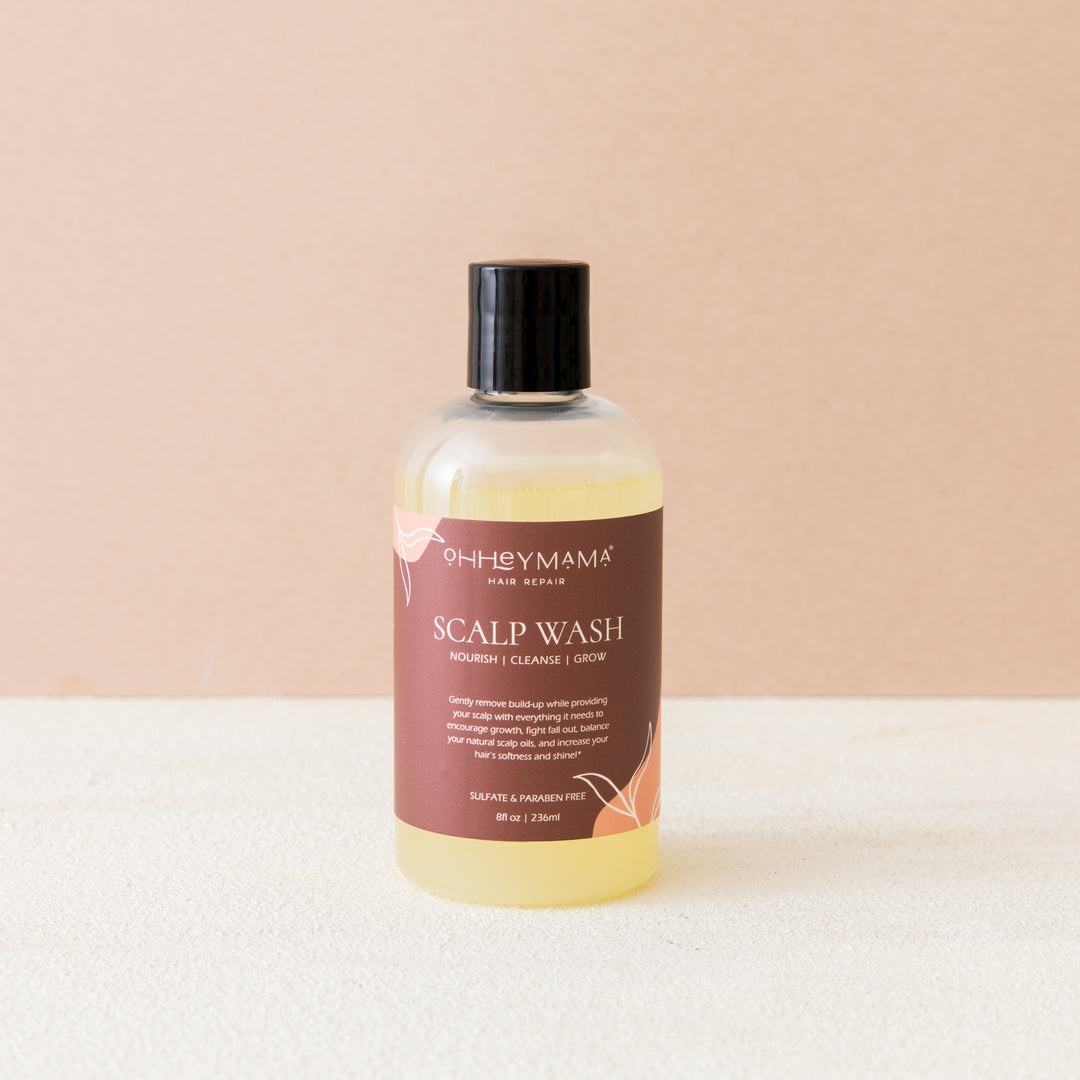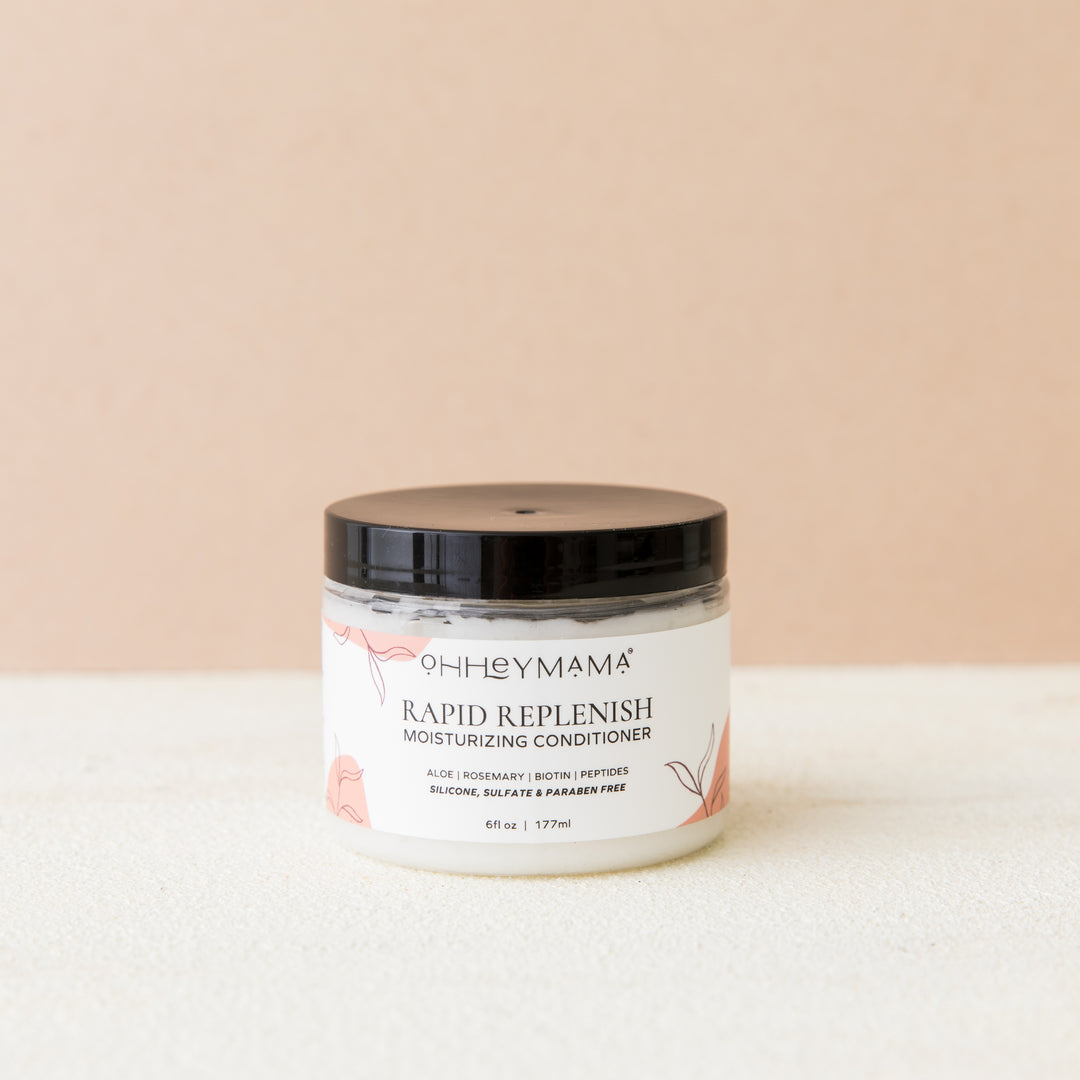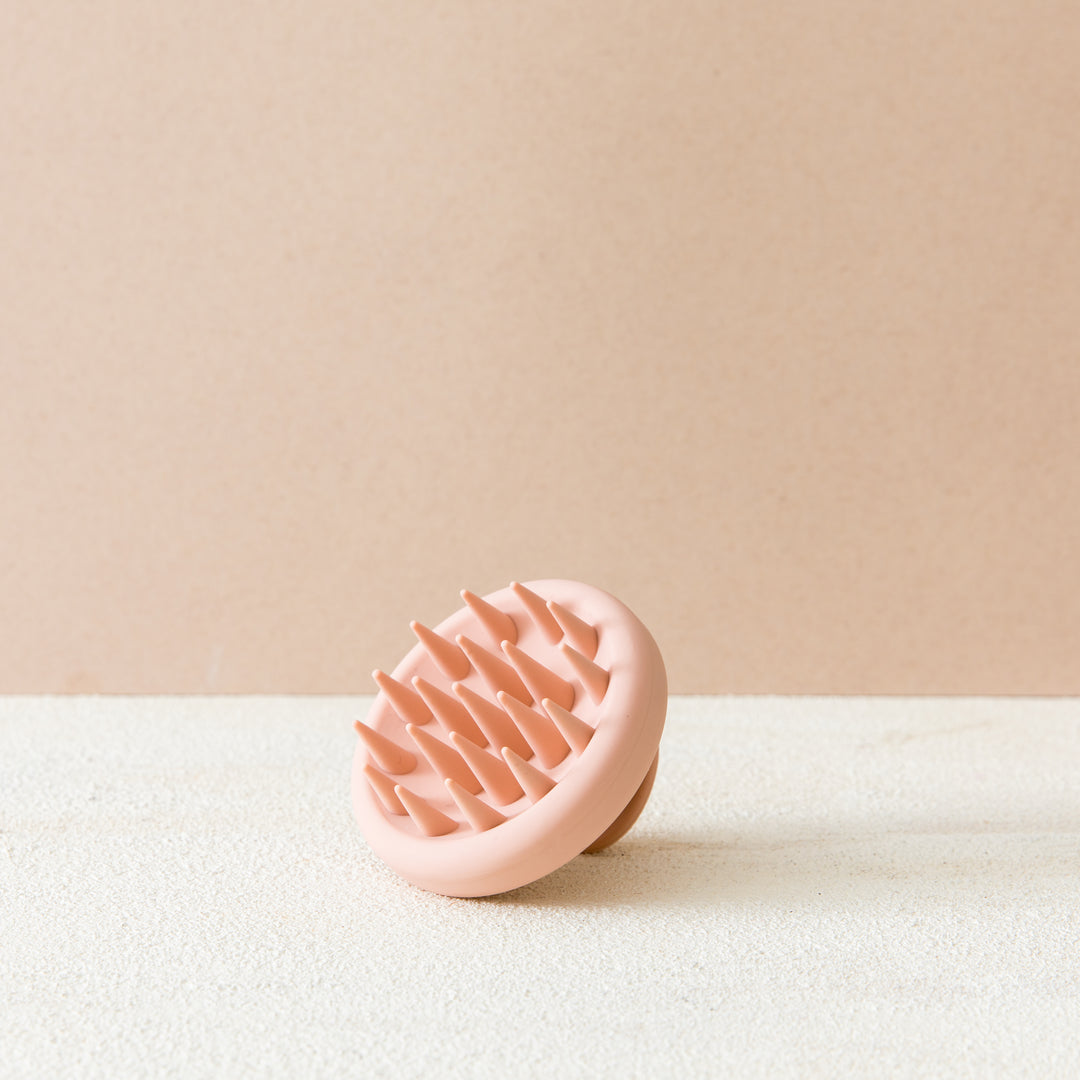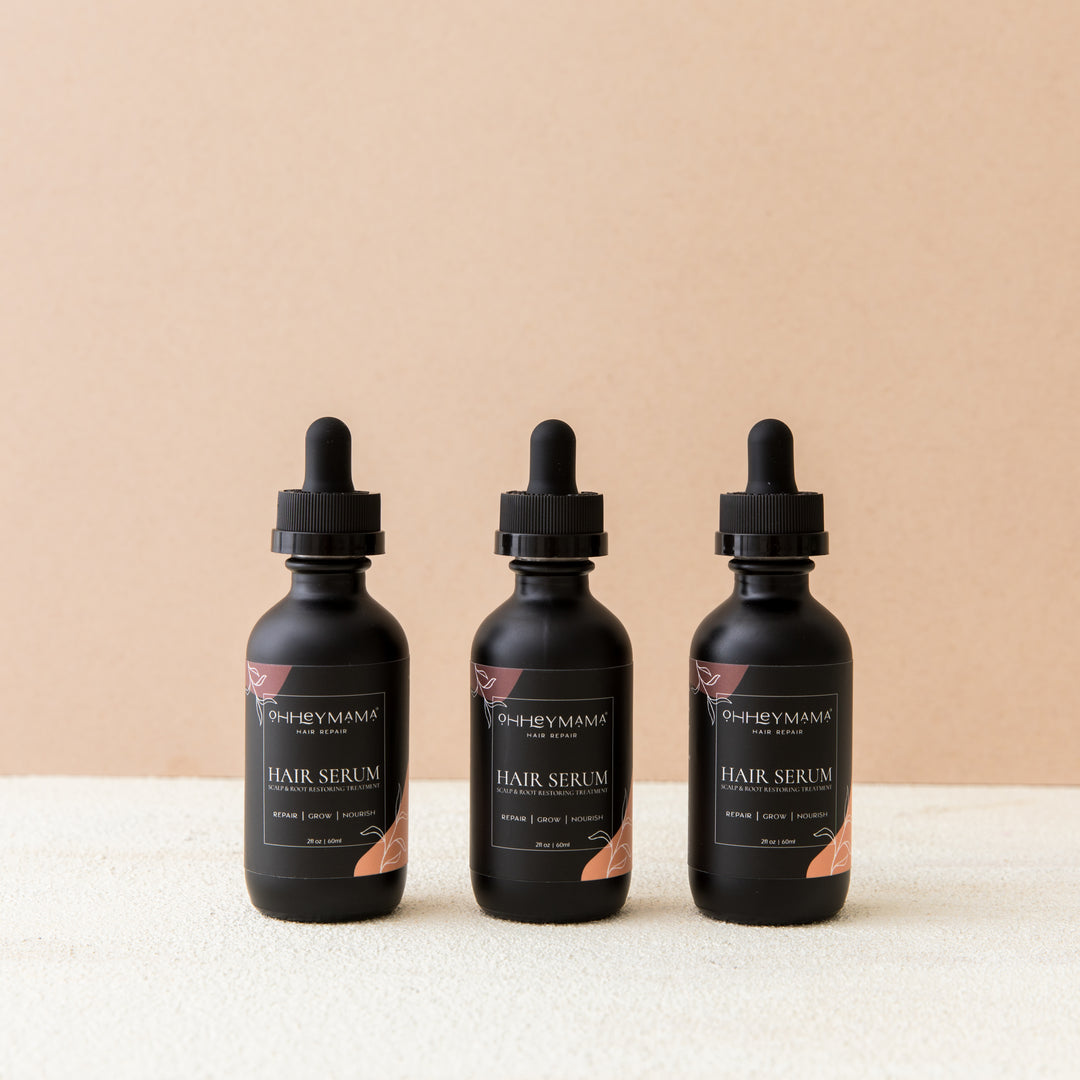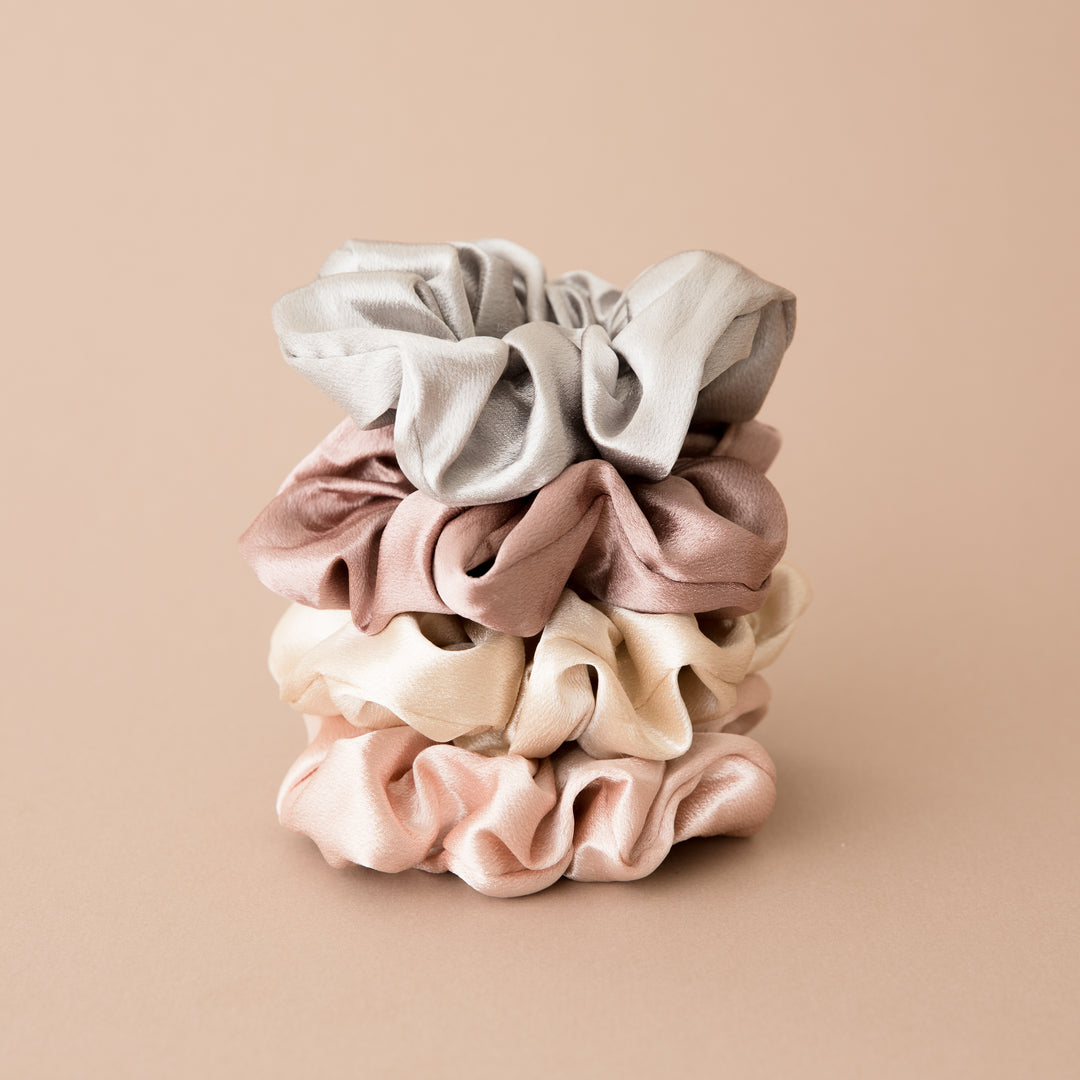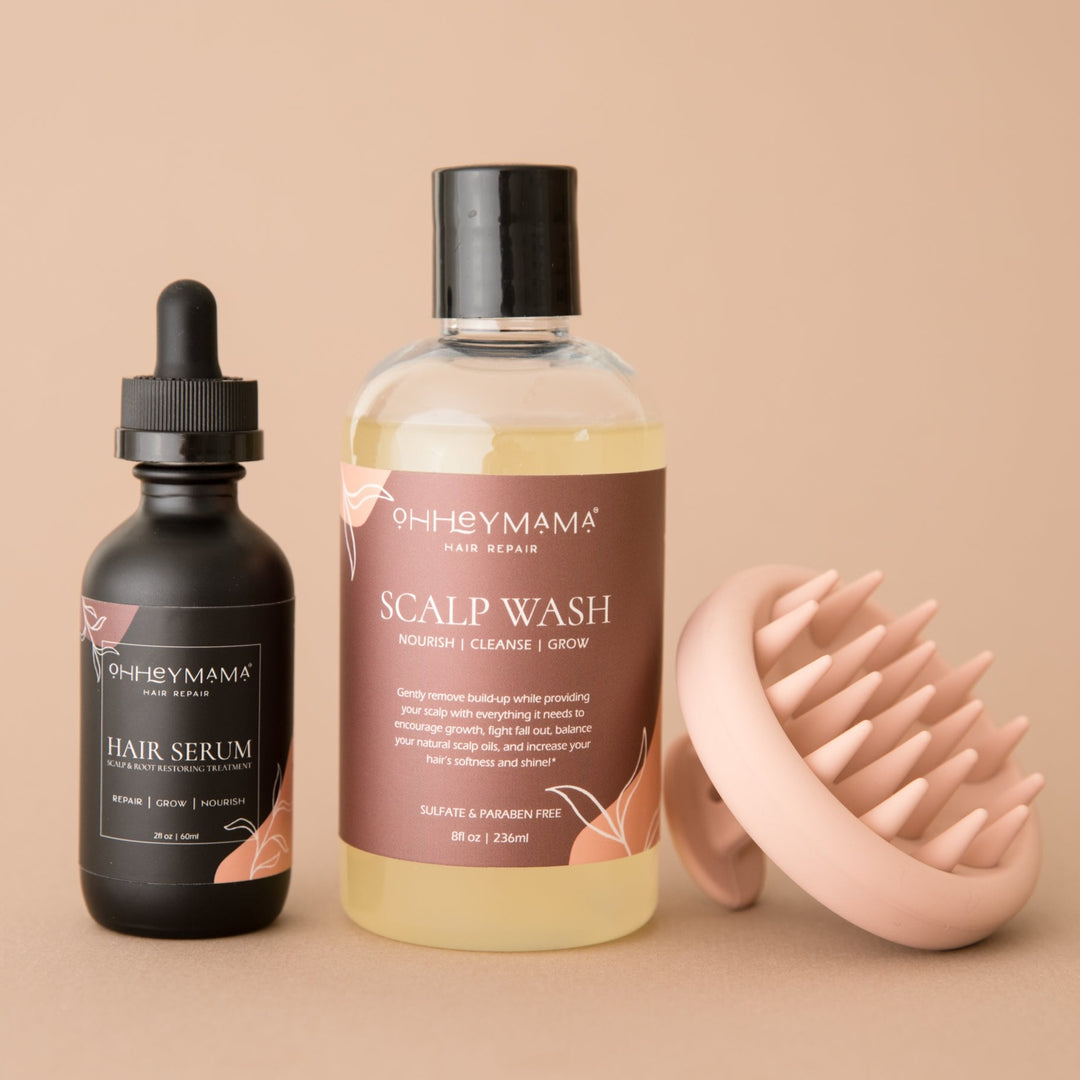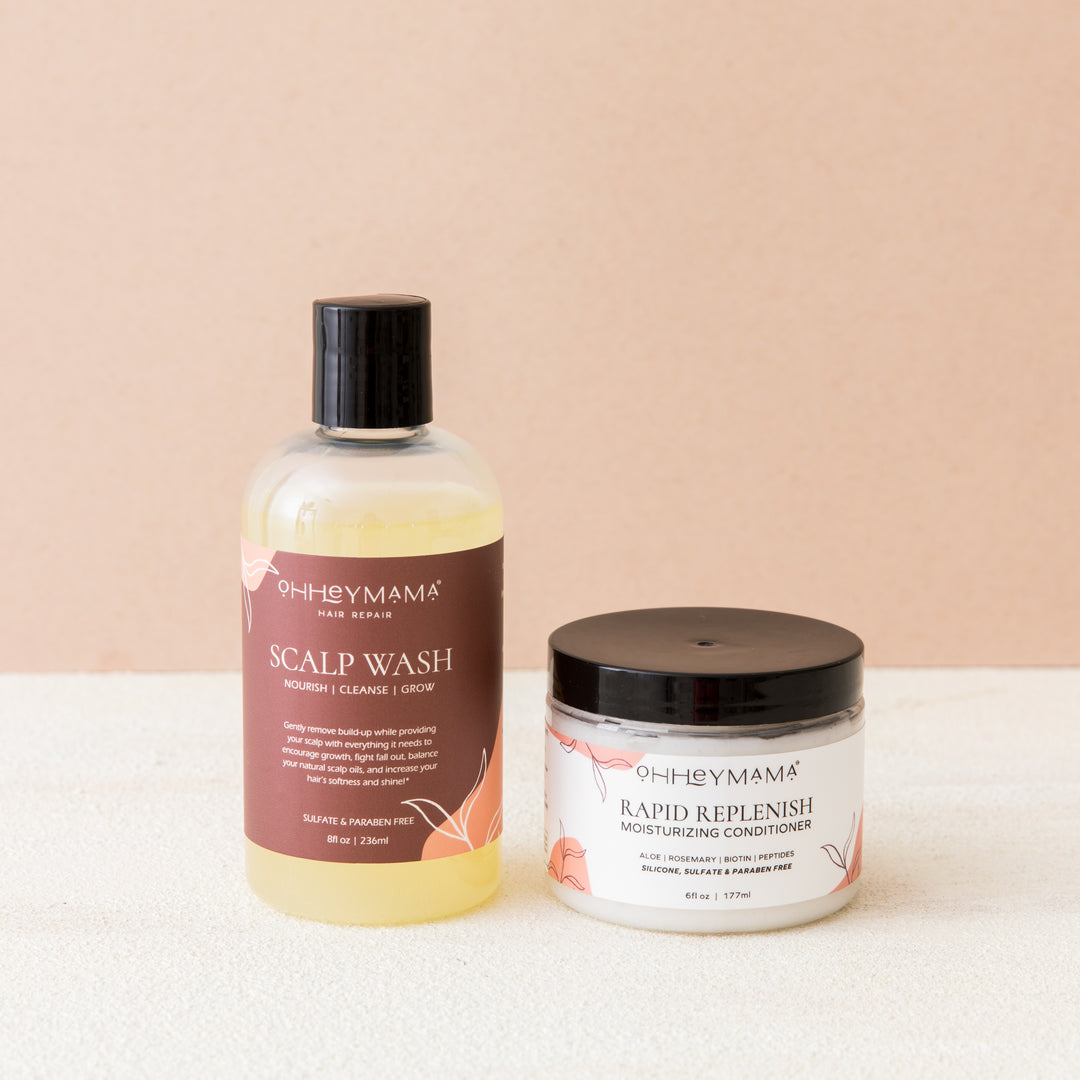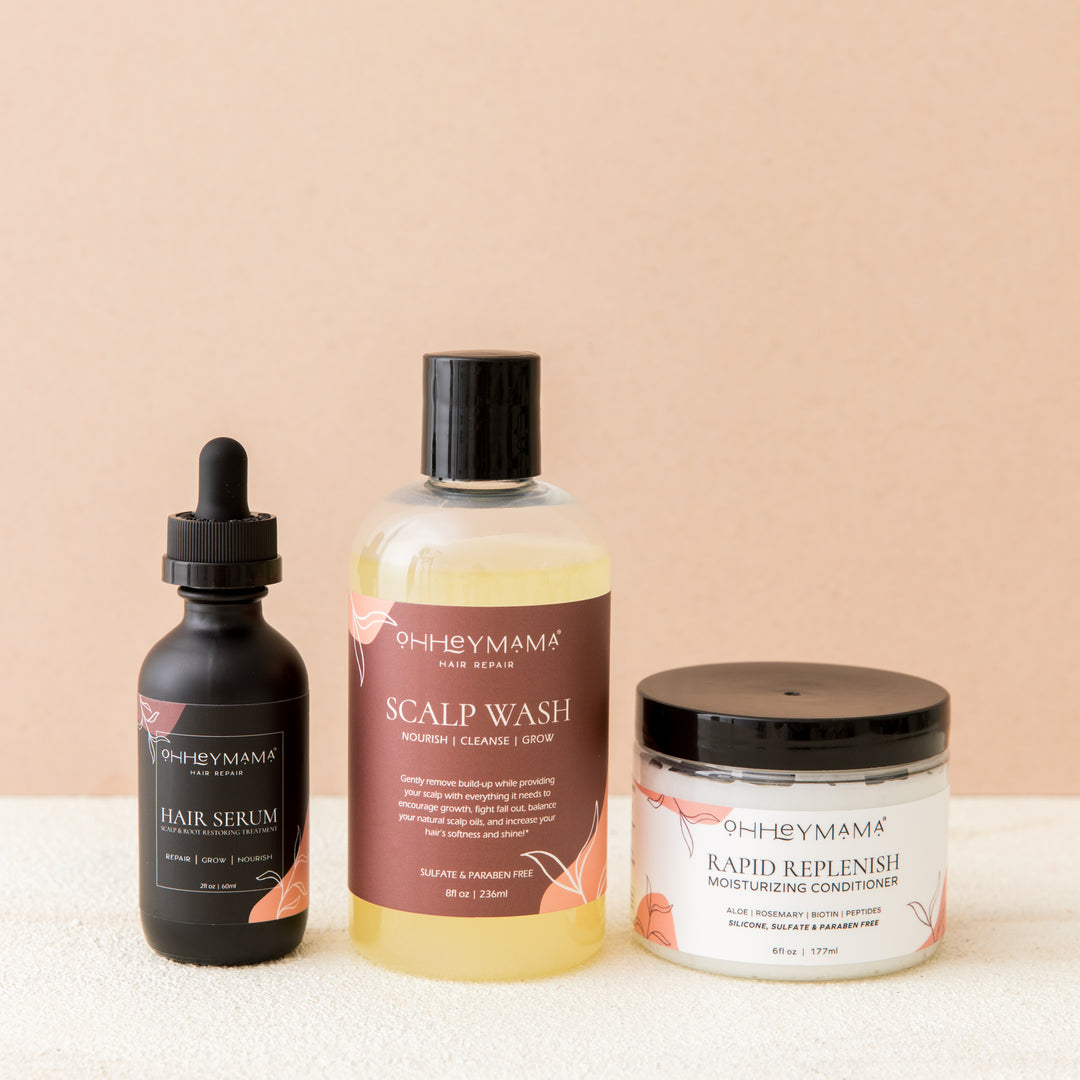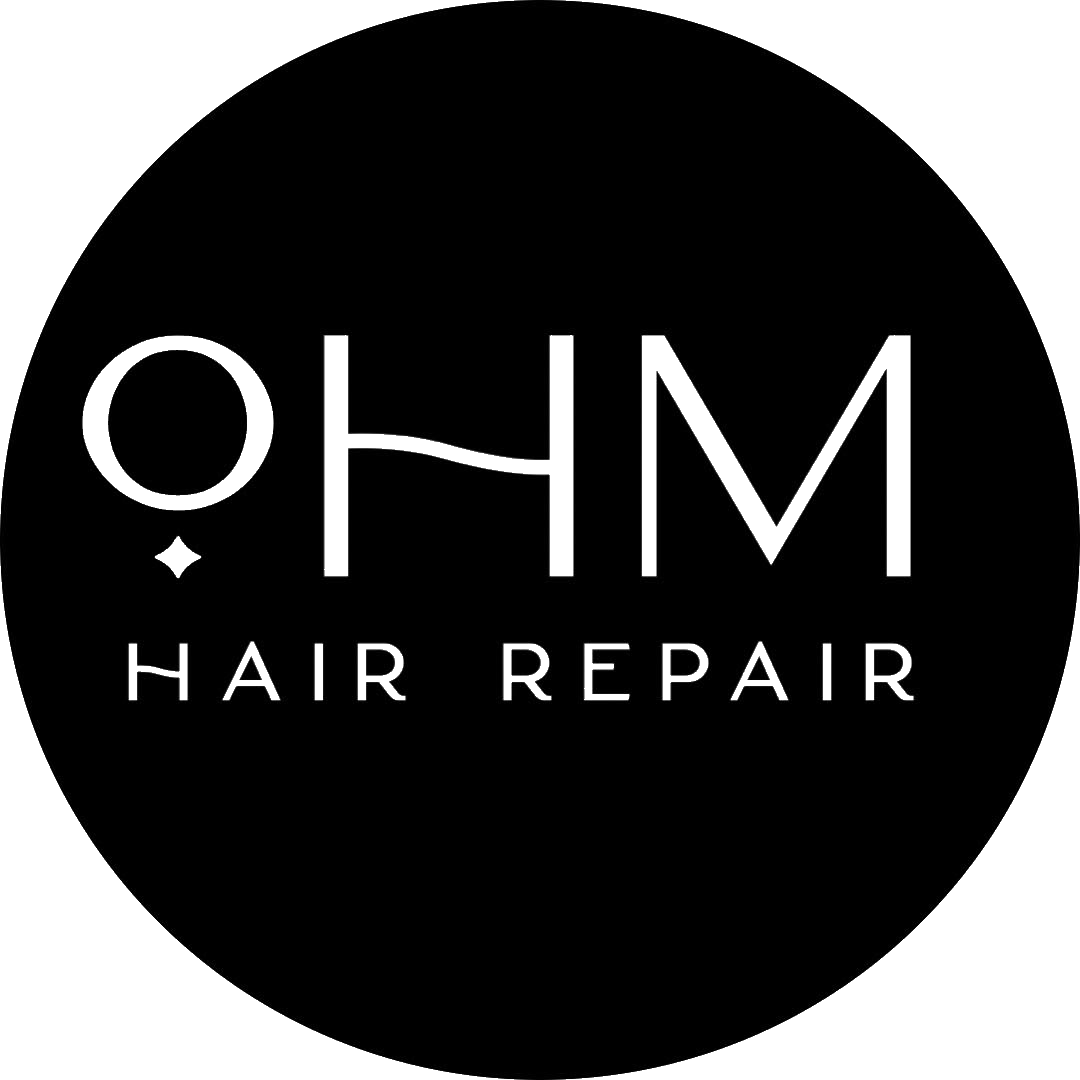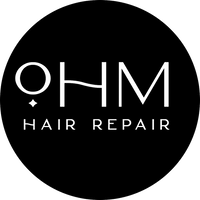6 Ways To Support Your Postpartum Hair (That actually work)


Thinning hair, scalp changes, or hair loss? We've been there!
Picture this, you’re pregnant. You may not be feeling your best, but one thing's for sure, your hair has never looked better - Hello Disney princess vibes! But now that your sweet baby is in your arms, that beautiful mane you once had is now in places it shouldn’t be - between baby’s fingers, your partner's laundry, covering your floor, and most definitely clogging your shower drain. Sound familiar?
Add to that, shedding, receding hairlines, texture changes, crazy regrowth, and even changes to your scalp; the postpartum period can really be a wild ride for your hair and scalp. Which is probably why you’re on this page looking for tips and tricks to help manage it all, but first, we need to know...
Why does hair fall out at an alarming rate post-baby?
According to the American Pregnancy Association, around 40% to 50% of women experience postpartum hair loss. Pregnancy releases high estrogen levels that promote the hair growth cycle and press pause on the shedding cycle. After giving birth, the hormones slowly level out, and the shedding begins again. And while shedding hair is normal for everyone, for some moms, the postpartum hair phase is extreme, and there seems to be no end in sight.
And although we are taught that it’s “normal” and “common” deeming it as such suggests that there’s nothing you can do about it, when in fact, there is! Being proactive means that you care. You care about your identity as a woman and as a mom. You care about your mental health and wellbeing. Being proactive with your postpartum hair is self care, and mama, we have the methods to help you care for yourself!
The 6 things you can do to support your postpartum hair (that will actually help):
1. THE MOM CUT
You may be trying to avoid a "mom cut" but a fresh hair cut works wonders to hide thinning hair creating more volume and breathes new life to your strands.

We know, we know...the “mom cut” gets a bad rap! (Google it and images of Kate Gosselin’s spiky hairstyle from Kate Plus Eight are guaranteed to pop up). But there’s a reason the term “mom cut” exists. It’s not a right of passage into motherhood kind of thing, but a postpartum hair loss, hair thinning, and manageability kind of thing.
The reality is that a postpartum haircut is a great way to fight the effects of postpartum hair changes and hide thinning hair creating more volume. There’s also an emotional or psychological element to chopping your hair. A fresh cut may be the fresh start new moms crave after being pregnant for nine months or a way to feel in control of something during an uncontrollable time. Like they say, “Out with the old, and in with the new.”
2. GET UN-TANGLED
Brushing and detangling your hair before showering can be a powerful and effective way to reduce the amount of hair that appears in the drain. And let's be honest, cleaning globs of hair out of the drain is officially the worst household chore ever!
No, we’re not talking about the Disney movie. But for real, detangling our hair can feel like such a chore, but it can play a powerful role in your postpartum hair routine. The hair is the most fragile while wet and strongest when dry. You can drastically reduce hair fallout by gently detangling your dry hair before washing. It also helps to reduce the tangles you may inevitably get from showering anyway. There is an exception for all the curly or textured hair mamas out there, where brushing dry hair is a no-go. Detangling your hair once conditioned is a great option to reduce breakage and fallout as well.
3. USE PRODUCTS WITH NATURAL DHT BLOCKERS
Hair products with botanical ingredients like Stinging Nettle or Saw Palmetto are scientifically proven to be natural DHT blockers and can you help fight fall out.

Using hair products with natural DHT (dihydrotestosterone) blockers is an essential part of any postpartum hair routine. DHT plays a massive role in chronic hair loss, but how? After birth, estrogen levels drop dramatically, giving room for testosterone to increase. The human body naturally produces DHT, a derivative of testosterone. In short, once our bodies produce DHT, it likes to stick around in the skin and hair follicles, causing the follicles to shrink in size which leads to thinning, and ultimately the dreaded fall out.
DHT blockers block DHT from shrinking the follicle, and protect your hair from fall out! With natural DHT blocking products like our Restorative Hair Serum for Hormonal Hair Support, you can be confident in knowing that you are not using synthetic hormones, but rather all-natural herbal ingredients to naturally aid in blocking the effects of DHT.
4. START A SCALP CARE ROUTINE
Scalp care is hair care - a scalp care routine with nourishing oils and natural DHT blockers, like Saw Palmetto and Stinging Nettle, can be a powerful way to support healthy hair growth and fight fall-out.

You know that amazing feeling when a stylists’ magical fingers massage your scalp during a wash at the hair salon? You can recreate that feeling at home. Ok, it's not entirely the same, but massaging your scalp is not only relaxing but beneficial as well. It brings blood flow and circulation to your hair follicles, which is a necessary component of a healthy scalp, and healthy hair growth.
Giving yourself a 5-minute scalp massage a day will provide much needed stimulation, as well as remove any unwanted build up from your scalp (which can also be the cause of slow growth and fall out). Add a nourishing hair serum or scalp oil while you massage to introduce stimulating ingredients to help you grow (and regrow) your best-looking hair ever! Keep the hair serum in for as long as you like - all day, for an hour, 45 minutes, or while you sleep. The longer it’s in, the more it will naturally distribute to your ends, giving you a full hair treatment. Fine haired ladies, don’t worry - our Restorative Hair Serum is a leave-then-wash-out product that will leave your hair moisturized but never heavy or oily.
Pair that with a deep-cleansing and sulfate-free all-natural scalp wash, like our Nourishing Scalp Wash (like shampoo, only better!) for an extra boost of scalp love. This scalp wash will not only remove build-up but will help stimulate your follicles alongside the scalp massage by balancing your natural scalp oils and fighting DHT. Not to mention that it smells amazing!
Shameless plug, below are the top 3 best selling scalp care products by Oh Hey Mama, our Hair Serum, Scalp Wash, and Bundle... because scalp care is hair care!
5. BEWARE OF THE MOM BUN (AND PROTECT YOUR HAIR FROM DAILY DAMAGE)
We recommend protecting your hair from tangles and damage with a loose ponytail, braids, or a gently wrapped bun. Choose hair-friendly hair ties like silk or velvet scrunchies and silk pillow cases for added tangle-free protection.

Yes, we said it - the infamous mom bun can be very damaging for your postpartum locks. We know it's sad, but it’s the truth. Pulling your hair back tightly and then twisting and turning it into a hair tie puts a lot of unnecessary strain on both the hair follicles and the lengths of your hair.
Protective hairstyles for sleep are also important to consider. Sleeping may be a luxury at the moment, but by sleeping in loose braids, you’ll keep your hair free from looking like a bird’s nest in the morning. You can take the nighttime hair routine a step further with a silk pillowcase. Cotton pillowcases allow your hair to intertwine in the cotton fibers, causing tangles and breakage - so not great for your postpartum locks. *Bonus point* your skin also loves a good silk pillowcase.
6. EAT YOUR WAY TO HEALTHY HAIR GROWTH
Continue taking your daily prenatal, eat a well-balanced diet filled with whole rich foods (and coffee... so... much... coffee!), and consider adding collagen to your diet for additional support.

For the most part, pregnant mamas are careful with their diet, take their prenatal vitamins, and indulge in their cravings. Once the baby is earth-side, women need to replenish the body with Vitamin A, Vitamin C, Vitamin D, Vitamin E, Zinc, and Iron. As always, consult your doctor with any concerns.
AND REMEMBER... HAIR & SCALP CARE IS SELF CARE
We know it’s hard, but you don’t have to fall for the #momhairDONTcare trap of accepting hair changes as a non-negotiable aspect of motherhood. We believe that self care is just as important as taking care of your family.

The goal is to create a hair and scalp routine you can stick to. Finding simple methods you can incorporate into your daily routine that won’t take up a block of your time - unless you’re having a bubble bath with a hair treatment in and a glass in your hand. In that case, take as long as you need. Easy and manageable, but most importantly, impactful and effective.
Start taking control of your postpartum journey today because you deserve your best hair ever. Yes, even postpartum.
Follow us on Instagram for more hair care tips and laughs!
And don’t forget to tag us and use #momhairDOcare so we can follow you on your post-baby journey.





